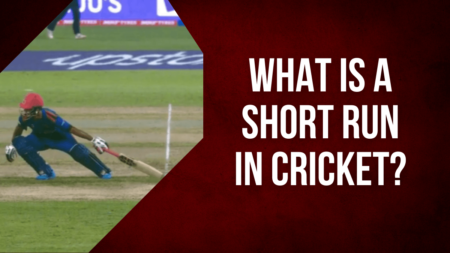

When a building is constructed, there are various ideas that an engineer might pitch in for the construction of a gate. One such gate is designed such that it is a part of a larger door or a gate. Such an arrangement is called the wicket gate. The combination of stumps and bails in cricket precisely got the term “wicket” for this reason.
Initially, there used to be only two stumps on top of which was a single long bail connecting the stumps. This gave it a characteristic gate-like appearance. However, in 1775, an incident in a match between Kent and Surrey was a turning point in the history of the cricket stumps. Lumpy Stevens bowled three consecutive deliveries to John Small, each of which went between the two stumps. The Laws of Cricket state that for a batsman to be considered out, the bails must be dislodged. Small was lucky on all three instances and the incident led to the introduction of the middle stump.
Introduction of the middle stump led to the introduction of two pieces of bails instead of one. The new modifications standardized the height of the stumps to 28 inches and they should be as wide as 9 inches. The bails on the stumps should not be taller than 0.5 inches and their length was fixed at 4.31 inches.
Off-stump, leg-stump and middle stump
Each of the three stumps have a name. The stump that is at the side near the batman’s bat is called the off-stump. The stump corresponding to the batman’s legs is called the leg-stump. As state previously, the centre one is called the middle stump. Cumulatively, the stumps and the bails are also called wickets. The stumps are cylindrical in shape. One end of the stumps have a groove for the bails to settle in. The other end is conical in shape which allows for the easy penetration of the stumps within the ground for its fixation.

The bails are cylindrical in shape but their structure have two definitive parts. The central portion is called barrel which is thicker than the “spigots” that protrude from the sides of the barrel. These spigots have different lengths. The smaller spigots are placed towards the middle stump. The bails do not extend beyond the width of the stumps.
In 2014, cricket bails saw a new development. Zing bails were introduced. These bails were made of composite plastic instead of the traditional wood. They house LED lights that glow up when the bails are dislodged. The introduction of these bails made it easier for umpires to come to a decision regarding a batman’s dismissal.

A test match goes on for five days. When a day’s play concludes, the umpires remove the bails from both the sets of wickets. This is termed as “Stumps” which indicates that no more play is remaining for the day.
Stumps play a crucial role in cricket. The batman’s role is to guard the three vertical posts while simultaneously scoring runs for his team. There are various ways a batsman can be dismissed and in a lot of those modes the onus is on the stumps. Click here to read more about it.




